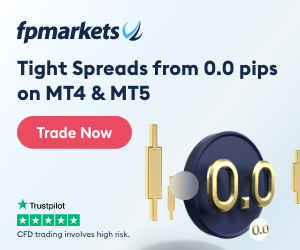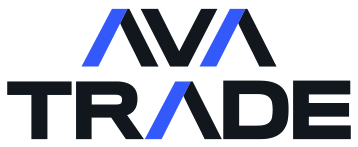-
MetaTrader 4 Brokers
The top MT4 brokers in AU
-
MetaTrader 5 Brokers
The best MT5 brokers in AU
-
TradingView Brokers
The best TradingView brokers
-
cTrader Brokers
The top cTrader brokers in AU
-
Forex Trading Apps
Trade on the go from your phone
-
Copytrading Brokers
Copy professional traders
-
All Trading Platforms
Find a platform that works for you
Select brokers to compare
Broker Score | Risk Statement | Min. Deposit | Regulation | Trading Desk Type | Trading Instruments | Forex Pairs | Crypto Pairs | Pros | Cons | Regulation | Trading Conditions | Trading Platforms | Deposit & Withdrawal | Education & Research | Assets Available | Customer Service | % Lose with this broker | Leverage | Spread | Hedging | Scalping | Account Types | Islamic Account | Trading Platforms | Funding Methods | Trading Commission | ||
|---|---|---|---|---|---|---|---|---|---|---|---|---|---|---|---|---|---|---|---|---|---|---|---|---|---|---|---|---|
| 75.33% of retail CFD accounts lose money | AUD 5 |      | Market Maker | Commodities, Energies, Stock CFDs, Forex, Indices, Metals, Shares | 57 | 0 |
|
| Read Review | 75.33% | 30:1 | 0.60 pips | Yes | Yes | Micro, Standard, XM Ultra Low, XM Zero | Yes | MT4, MT5 | Bank Transfer, Bitcoin, Fasapay, Mastercard, Neteller, PerfectMoney, Skrill, Visa | Fees Included in Spread | |||||||||
| 69% of retail CFD accounts lose money | AUD 0 |            | Market Maker | Bonds, Commodities, Cryptocurrencies, Digital 100s, Stock CFDs, ETFs, Forex, Indices, Interest Rates | 80 | 10 |
|
| Read Review | 69% | 30:1 | 0.60 pips | Yes | Yes | DMA, Live Account, Spread Betting | Yes | MT4, L2 Dealer, ProRealTime | Bank Transfer, Visa, Mastercard, Paypal | Fees Included in Spread |
How do IG and XM stack up against each other?
The Radar Chart below highlights how the brokers stack up against each other across various metrics. The highest score a broker can receive in each area is 5.
IG
XM
At FxScouts, we help traders find the broker that suits their trading needs. In many cases, the best way to achieve this is to compare brokers side-by-side.
To compare IG and XM, we used the same factors we use when reviewing brokers: The trust and regulation of the broker, the trading platform, the costs and trading conditions, and the level of education and market analysis available at the broker.
Does IG or XM have a better trust and regulation rating?
Trust and regulation are some of the most important factors to consider when choosing a Forex broker. Trust in the Forex trading business is almost entirely founded upon regulation. We spend many hours evaluating the safety of each broker by delving into their fine print and confirming each one of their regulatory licences on the online registers. The more top-tier authorities a broker is regulated by, the higher its trust rating.
In our comparison, we found that IG holds six Tier 1 and three Tier 2 licences, and XM holds two Tier 1 and one Tier 2 licences.
Is IG financially regulated?
Yes IG was founded in 1974 and is regulated by ASIC, BMA, MAS, BaFin, CFTC, DFSA, FCA, FSA-Japan, FSCA, FINMA and FMA.
Is XM financially regulated?
Yes XM was founded in 2015 and is regulated by ASIC, CySEC, DFSA, FSCA and FSC.
Based on these findings, IG earned a higher trust rating than XM.
Does IG or XM have lower costs?
Another important aspect we consider when comparing brokers is the cost of trading. When evaluating trading costs, we always consider the minimum deposit required to open an account and the ongoing trading costs, including the spreads and commissions. When calculating trading costs, we measure the cost to trade one lot of EUR/USD using the broker’s account with the lowest minimum deposit. The cost includes both the spread and any commission charged.
Not all brokers publish their trading costs, so we often open accounts and trade on their platforms to verify the spreads and commissions. Based on our reviews, we found that IG and XM have the same trading costs.
Does IG or XM offer a better choice of trading platforms?
Traders want Forex brokers to offer them a choice of trading platforms, so we give brokers who offer multiple platforms higher ratings. Trading platforms we consider include MetaTrader4, MetaTrader5, cTrader and proprietary mobile and web-based platforms.
In this case, IG offers support for MT4, L2 Dealer and ProRealTime and XM offers support for MT4 and MT5.
Do the brokers offer copy trading?
Copy trading is a great option for beginner traders who can’t trade full-time or lack experience with Forex trading. In this case both IG and XM offer copy trading.
Which broker offers a better choice of trading instruments?
A variety of CFD instruments – and a large range of CFDs for each instrument category allow traders more opportunities for profitable trading. The best brokers will have thousands of CFDs to trade, covering all these instrument categories. We found that IG offers a greater range and depth of instruments to trade than XM. IG offers 80 Forex pairs to trade and XM offers 57 Forex pairs to trade.
Toplist Forex Pairs
And what about Cryptocurrencies?
In this case, IG offers 10 cryptocurrencies while XM offers 0 cryptocurrencies. So if you want to trade cryptocurrencies, we advise trading with IG.
Which broker offers better deposit and withdrawal processes?
Although brokers may have reasonable trading fees, many traders are caught out by the high non-trading fees charged by some brokers, including deposits and withdrawals. Traders want to be able to deposit and withdraw funds quickly and cheaply. Most brokers have multiple funding methods with zero fees for making deposits, but some brokers make it more expensive and take longer to process withdrawals.
We rate brokers more highly that process withdrawals within 24 hours by multiple withdrawal methods and without charging processing fees. We found that neither IG nor XM charges a withdrawal fee. Overall, IG has better deposit and withdrawal processes than XM.
Which broker offers better educational support?
We often find that brokers offer very little in the way of educational materials, forcing traders to use other third-party sites or self-educate elsewhere. Beginner traders need well-structured, well-presented materials in multiple formats to get a good start at trading. More experienced traders also benefit from webinars led by experts in the field and advanced trading strategy sections with new trading ideas.
IG and XM both have very good educational support. Both IG and XM offer educational support for more experienced traders.
Which broker offers better market analysis materials?
To successfully predict the price movements of an instrument, traders will need access to frequent market research and analysis. We find that research and market analysis are always better when they are produced in-house and updated frequently. Third-party resources don’t show the same expertise in trading ideas, so we place a strong emphasis on frequent in-house updates. Some brokers also often offer interactive webinars where traders can learn from experts in the field.
We found that IG offers better research analysis than XM and that both IG and XM offer frequent webinars.
Our overall Verdict on IG
Founded in 1974 and ASIC-regulated since 2001, IG has a long history of providing safe and secure trading, low trading fees, and a vast range of trading instruments.
Our research found that IG has over 320,000 clients worldwide and has been the largest CFD broker in the world by revenue for the last few years. It has two low-cost trading accounts with no minimum deposit requirements and offers trading on over 17,000 instruments, all of which can be accessed on its award-winning app and web trader platform.
For more traditional investors, IG also runs a fully licenced stock brokerage on the side. And in addition to a wide range of trading tools, IG has a world-class selection of educational and market analysis materials to get new traders started.
Our overall Verdict on XM
A popular global broker with a large customer base and a good reputation, XM is a good option for most Australian traders. It has a low minimum deposit of 5 USD and some of the lowest fees in the industry on its Ultra Low Account.
For beginners, XM provides excellent research and education and has a beginner-friendly trading app. It also has an outstanding range of trading tools, and its customer service is responsive and well-trained.
Because ASIC regulates XM in Australia, Australian traders can be sure they will be treated fairly. Their funds are segregated at top-tier banks, and they are granted automatic negative balance protection.
Which broker has the highest overall rating?
IG has an overall rating of 4.69 and XM has an overall rating of 4.45. For more detail please read our reviews of IG and XM.Others Also Visit
Stay updated
This form has double opt in enabled. You will need to confirm your email address before being added to the list.
































